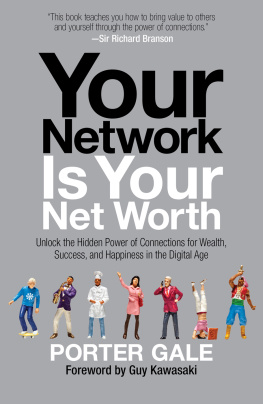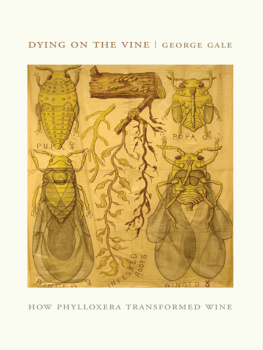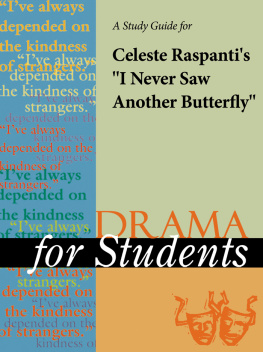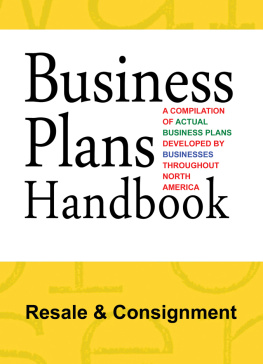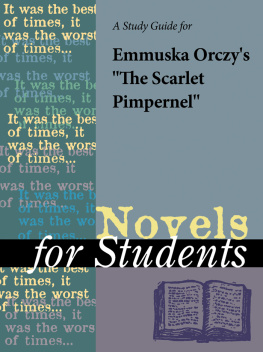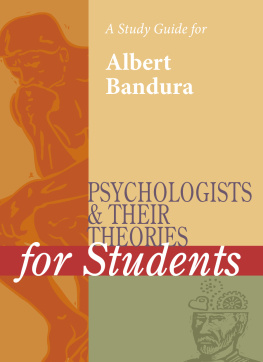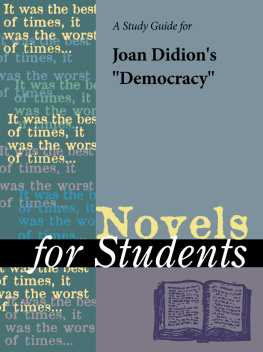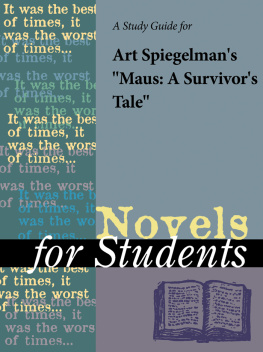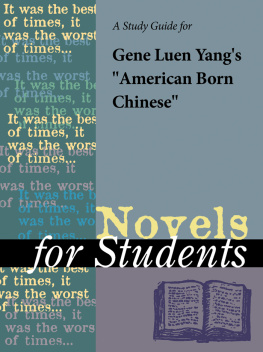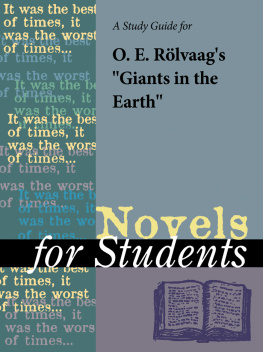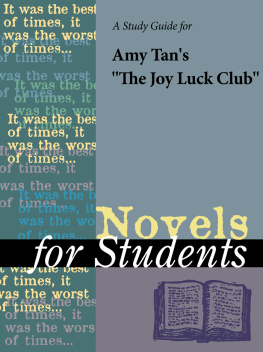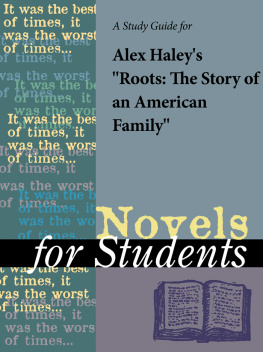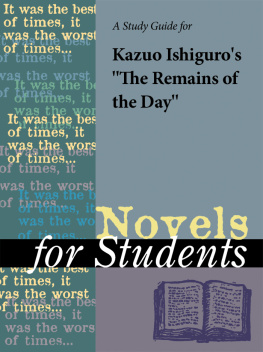TABLE OF CONTENTS
Guide
Novels for Students, Volume 25
Project Editor: Ira Mark Milne
Editorial: Jennifer Greve
Rights Acquisition and Management: Lori Hines, Aja Perales, Lista Person, Sue Rudolph
Manufacturing: Drew Kalasky
Imaging: Leitha Etheridge-Sims, Lezlie Light, Mike Logusz, Dan Newell
Product Design: Pamela A. E. Galbreath
Vendor Administration: Civie Green
Product Manager: Meggin Condino
2007 Gale, a part of Cengage Learning Inc.
Cengage and Burst Logo are trademarks and Gale is a registered trademark used herein under license.
For more information, contact
Gale, an imprint of Cengage Learning
27500 Drake Rd.
Farmington Hills, MI 48331-3535
Or you can visit our Internet site at http://www.gale.com
ALL RIGHTS RESERVED
No part of this work covered by the copyright hereon may be reproduced or used in any form or by any meansgraphic, electronic, or mechanical, including photocopying, recording, taping, Web distribution, or information storage retrieval systemswithout the written permission of the publisher.
For permission to use material from this product, submit your request via Web at http://www.gale-edit.com/permissions, or you may download our Permissions Request form and submit your request by fax or mail to:
Permissions Department
Gale, an imprint of Cengage Learning
27500 Drake Rd.
Farmington Hills, MI 48331-3535
Permissions Hotline:
248-699-8006 or 800-877-4253, ext. 8006
Fax: 248-699-8074 or 800-762-4058
Since this page cannot legibly accommodate all copyright notices, the acknowledgments constitute an extension of the copyright notice.
While every effort has been made to ensure the reliability of the information presented in this publication, Gale, an imprint of Cengage Learning does not guarantee the accuracy of the data contained herein. Gale, an imprint of Cengage Learning accepts no payment for listing; and inclusion in the publication of any organization, agency, institution, publication, service, or individual does not imply endorsement of the editors or publisher. Errors brought to the attention of the publisher and verified to the satisfaction of the publisher will be corrected in future editions.
ISBN-13: 978-0-7876-8682-6
ISBN-10: 0-7876-8682-4
ISSN 1094-3552
Printed in the United States of America
10 9 8 7 6 5 4 3 2 1
American Pastoral
Philip Roth
1997
Introduction
American Pastoral (1997) is the twenty-second book by Philip Roth, one of the leading twentieth-century American writers. This long novel, which is almost mythic in scope, explores the course of American history from the late 1940s, which Roth's narrator and alter ego, Nathan Zuckerman, regards as a golden period, to the social upheavals that marked the 1960s and early 1970s. The focal point of the story is a Jewish character called Swede Levov, an outstanding man in every respectbrilliant athlete, successful businessman, devoted husband and fatherwhose only goal is to live a tranquil, pastoral life in rural Old Rimrock, New Jersey. But his rebellious sixteen-year-old daughter, Merry, gets caught up in the anti-Vietnam War movement and plants a bomb at the local post office, killing one person. Swede's idyllic life is shattered forever, and for the rest of his life, as the novel zigzags its way back and forth in time, Swede tries without success to understand what went wrong. How could such a thing have happened? In his searching examination of how confident, post-World War II America gave way to the violence and disorder of the 1960s, Roth explores, with depth, understanding, and compassion, issues such as the nature of community and belonging, Jewish assimilation, father-daughter relations, familial loyalty and betrayal, and political fanaticism.
Despite Faulkner's roots in the South, he readily condemns many aspects of its history and heritage in Absalom, Absalom!. He reveals the unsavory side of southern morals and ethics, including slavery. The novel explores the relationship between modern humanity and the past, examining how past events affect modern decisions and to what extent modern people are responsible for the past.
Author Biography
One of America's leading novelists of the twentieth century and into the twenty-first century, Philip Roth explores the conflicts and tensions in American Jewish life. Roth was born in Newark, New Jersey, on March 19, 1933, the eldest son of Herman and Bess Roth, who were Jewish immigrants from Europe. Roth was raised in the Weequahic area of Newark, during the Depression. He graduated from high school at the age of sixteen and then earned a bachelor's degree in English from Bucknell University in 1954 and a master of arts degree, also in English, from the University of Chicago in 1955.
Roth served in the U.S. Army from 1955 to 1956 and married Margaret Martinson in 1959; they separated in 1963. His first book, Goodbye, Columbus, and Five Short Stories (1959), won the National Book Award in 1960. After two novels that received comparatively little attention, Roth wrote one of his best known novels, Portnoy's Complaint (1969). Its portrayal of the overbearing Jewish mother and her repressed son, Alex Portnoy, gave thousands of readers a hilarious picture of growing up Jewish in America in the 1940s and 1950s.
Through the 1970s Roth published a number of successful novels. In 1979, Roth published The Ghost Writer, the first novel in which Nathan Zuckerman appeared. Zuckerman, a writer, is Roth's alter ego, a semi-autobiographical figure, although not everything that happens to Zuckerman also happened to Roth. Throughout the 1980s and 1990s, Roth used Zuckerman repeatedly as a protagonist. Among the novels in which Zuckerman appears is American Pastoral (1997), which won the Pulitzer Prize. I Married a Communist (1998) may have been inspired by Roth's stormy relationship with his ex-wife, the actress Claire Bloom. They had married in 1990 and divorced in 1994, and Bloom wrote a memoir in which she portrayed Roth in an unflattering light. In the novel, a radio actor's life is ruined by a memoir written by his ex-wife.
Roth continued to write through the 1990s, winning awards repeatedly for his work. As of 2006, Roth's most recent novel was The Plot Against America (2004), an exploration of the anti-Semitism that might have developed in the United States had Charles A. Lindbergh defeated Franklin Roosevelt for the presidency in 1940.
Roth has also written a number of nonfiction works. Probably the best known is Patrimony: A True Story (1991), about the relationship between Roth and his father during the last five months of his father's life. The book won the National Book Critics Circle Award. As of 2006, Roth lived in Connecticut and continued to write prolifically.
Plot Summary
Part 1: Paradise Remembered
Chapter 1
American Pastoral begins in Weequahic, a middle-class area of Newark, New Jersey. The narrator, Philip Roth's alter ego Nathan Zuckerman, recalls his high school years during the late 1940s. In particular, he recalls Seymour Levov, a Jewish boy seven years his senior, who was Weequahic High School's star athlete during the early years of World War II. Everyone called Seymour, "the Swede" or "Swede," and he was widely loved and admired. Swede joined the Marines in 1945 and became a drill instructor. After college graduation, he married Dawn Dwyer, a Catholic woman and former Miss New Jersey.


